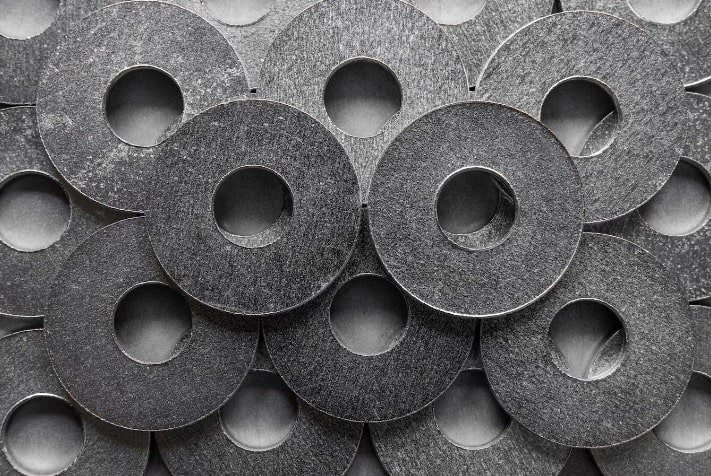Innovative Plastic Plating Techniques | Advint Incorporated
In recent years, significant advancements in the field of plating on plastics (POP) have revolutionized various industries, ranging from automotive to electronics. This paper delves into the latest trends, technologies, and applications in POP, underscoring its burgeoning importance in contemporary manufacturing.
At the forefront of this revolution is electroless plating, a chemical process that deposits a thin metallic layer onto plastic surfaces without the need for electricity. This technique facilitates uniform coating on complex shapes and non-conductive materials, thereby enhancing the durability, conductivity, and aesthetic appeal of plastic parts.
Another groundbreaking method is physical vapor deposition (PVD), which produces extremely thin, highly adherent metallic coatings on plastic substrates. PVD coatings can impart properties such as increased hardness, improved wear resistance, and specific optical characteristics, all while maintaining the lightweight nature of the plastic base material.
Plasma-enhanced chemical vapor deposition (PECVD) pushes these boundaries even further. This technique employs plasma to aid in the deposition of various materials onto plastic surfaces, enabling the creation of coatings with tailored properties such as hydrophobicity, optical transparency, or specific electrical characteristics.
The implications of these advanced plating techniques are profound. In the automotive industry, plastic components can now replace heavier metal parts without compromising strength or durability, leading to improved fuel efficiency.
The electronics sector benefits from plastic housings that provide electromagnetic shielding, a crucial feature in our increasingly connected world.
Medical device manufacturers are leveraging these technologies to create implants and instruments that combine the biocompatibility of certain plastics with the requisite strength and wear resistance of metals. In the realm of consumer goods, designers are exploring new aesthetic possibilities, producing plastic products with metallic finishes indistinguishable from their all-metal counterparts.
As these plating techniques continue to evolve, we can expect even more innovative applications. The ability to selectively functionalize specific areas of plastic components opens possibilities for integrated circuitry and sensors embedded directly into structural parts. This could lead to a new generation of smart products with enhanced capabilities and improved resource efficiency.
However, challenges remain. Ensuring strong adhesion between the plating and the plastic substrate across a wide range of environmental conditions is an ongoing area of research. Additionally, as the industry moves towards more sustainable practices, developing eco-friendly plating processes and improving the recyclability of plated plastics are becoming increasingly important considerations.
The plastic metamorphosis driven by these cutting-edge plating techniques is more than just a technological advancement; it represents a paradigm shift in how we approach material selection and product design. As these technologies mature and become more widely adopted, they promise to blur the lines between traditional material categories, offering designers and engineers an expanded palette of possibilities to create the products of tomorrow.
The revolution in plastic plating techniques is ushering in a new era of manufacturing, where the versatility of plastics is enhanced by the properties of metals.
This synergy is not only pushing the boundaries of what’s possible in product design but also contributing to more efficient, lightweight, and potentially more sustainable manufacturing processes. As research in this field continues to advance, we can anticipate even more exciting developments that will further transform the landscape of modern manufacturing.
The Rise of Double-Shot Molding
One of the most exciting developments in POP is the adoption of double-shot (or twin-shot) molding techniques. This process involves creating parts with both plateable and non-plateable plastic resins, offering several advantages:
Reduced assembly costs
Elimination of post-plating assembly
Intricate and complex designs
Integration of colored textured plastic with chrome finishes
Possibility of creating 3D designs
Double-shot molding requires expertise in etching and activation to achieve controlled and highly selective plating without yield loss. This technique has found applications in various industries, including medical devices, consumer electronics, automotive components, and more.
Weight Reduction: A Key Driver
As industries strive for more efficient and environmentally friendly products, weight reduction has become a crucial factor. POP technologies enable the replacement of metal components with lighter plastic alternatives, particularly in automotive applications like door handles.
MID Metallization Technologies
Molded Interconnect Devices (MID) represent another frontier in POP. Several MID metallization technologies have emerged:
- Embedded catalysts (Palladium, LDS)
- Etch-defined techniques
- Printed image methods
These technologies are driven by cost and cycle time considerations, with applications spanning cell phone antennas, electronic connectors, medical devices, automotive components, and LED lighting.
Surface Preparation: The Key to Success
Regardless of the specific POP technique, proper surface preparation is crucial for successful metal deposition. Various methods are employed, including:
- Sand/bead blasting
- Chemical etching
- Plasma treatment
- Sulfonation
- Surface Activation (a controlled, vapor-phase technology)
- Pretreatment Processes
Three main types of POP pretreatment processes are currently in commercial use:
- Conventional Colloidal
- Direct Metallization/Short Cycle
- Ionic Palladium
Each process has its own sequence of steps, from chromic etching to electroplating.
The Advantage of Ionic Palladium Activation
Ionic palladium activation systems offer several benefits over traditional colloidal systems:
Reduced pre-plate process steps
- Elimination of over plating
- Lower palladium working concentrations
- Increased adhesion values
- Versatility in handling various POP projects
Expanding Material Horizons
POP techniques have been successfully applied to a wide range of plastics, including:
- ABS and PC/ABS
- PET and PBT
- LCP and PEEK
- Nylon 6 and 12
- TPO and Polypropylene
- Phenolics and Kevlar
This versatility has opened new possibilities for designers and engineers across multiple industries.
The Future of Plating on Plastics
As global demand for POP continues to grow, driven primarily by the automotive sector, we can expect further innovations in this field. While conventional colloidal systems remain widely trusted, ionic systems offer flexibility and cost reduction potential for the future.
The ongoing advancements in POP technologies promise to deliver lighter, more intricate, and more cost-effective components across various industries. As research continues and new applications emerge, plating on plastics will undoubtedly play a crucial role in shaping the future of manufacturing and product design.
By exploring the latest advancements and trends in POP, this paper aims to provide valuable insights for professionals and enthusiasts in the manufacturing sector. For those looking to stay ahead of the curve, understanding and leveraging these cutting-edge techniques is essential.
You may like also

Posted By:Venkat Raja
Jul 02, 2024
Tags:






